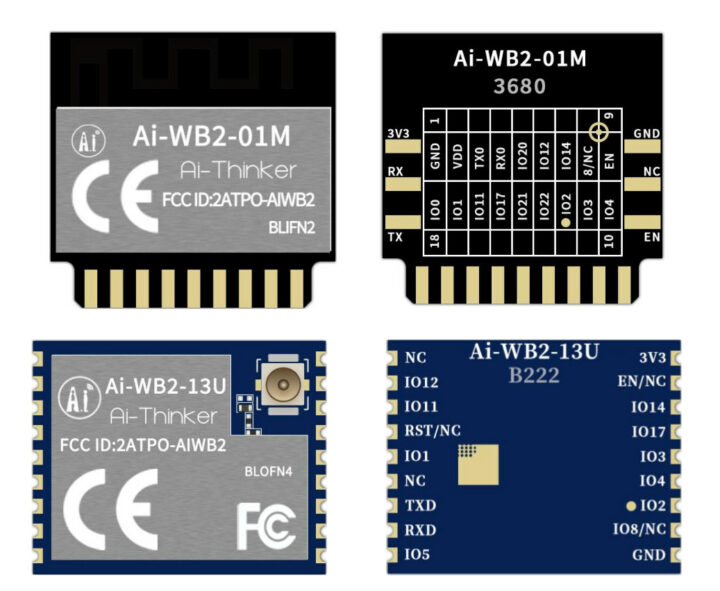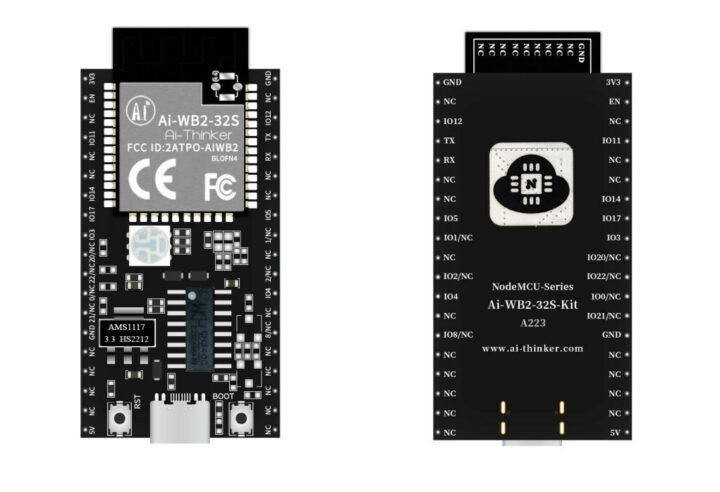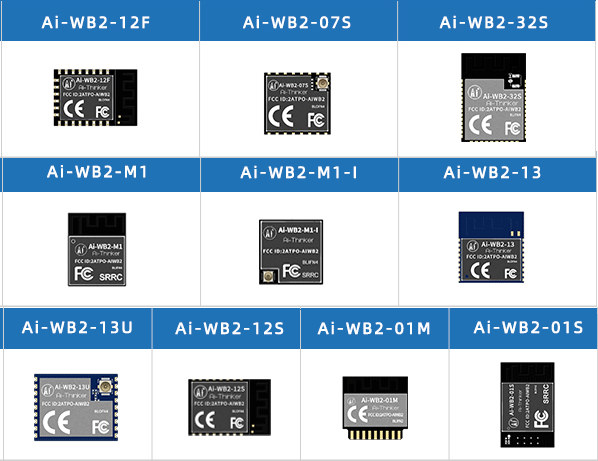AI Thinker has just introduced a new family of wireless IoT modules with the Ai-WB2 equipped with Bouffalo Lab BL602 RISC-V microcontroller offering both 2.4 GHz WiFi 4 and Bluetooth 5.0 LE connectivity.
There are ten different modules to choose from, probably to keep mechanical and electrical compatibility with ESP8266 and ESP32 modules, and the company expects customers to integrate those into Internet of Things (IoT) products, mobile devices, wearables, Smart Home appliances, and more.

Ai-WB2 modules share the following specifications:
- Wireless MCU – Bouffalo Lab BL602 32-bit RISC-V microcontroller @ up to 192 MHz with 276KB SRAM, 2.4 GHz WiFi 4 and Bluetooth 5.0 LE connectivity
- Storage – 2MB or 4MB SPI flash
- WiFi range – Up to about 500 meters (typical)
- I/Os – SDIO, SPI, UART, I2C, IR receiver, PWM, ADC, DAC, and GPIO (except Ai-WB2-01S with just UART/PWM/GPIO/ADC)
- Power Supply – 2.7V to 3.6V > 500mA
- Power Consumption – 12μA in deep sleep mode
- Temperature Range – Operating: -40°C to 85°C; storage: -40°C to 125°C
The AI-WB2 are available in various packages from DIP-8 to SMD-61, and with PCB antennas or IPEX antenna connectors.
The company uploaded an SDK for the new modules and development kits on GitHub. That SDK is based on the official Bouffalo Lab bl_iot_sdk working on Windows and Linux, but it’s unclear what they’ve changed if anything. The documentation also reveals three development kits: Ai-WB2-12F-Kit, Ai-WB2-13-Kit, and Ai-WB2-32S-Kit for the modules of the same names.

The Ai-WB2 modules are sold for $1.xx per unit in quantities of 100 pieces or more, while the development boards go for about $2.6 each for 10 pieces on Alibaba. If the prices on Alibaba are correct those module are price competitive against similar ESP8266/ESP32 modules, but I haven’t seen that many designs or projects based on Bouffalo Lab BL602, probably because Espressif has an advantage when it comes to software and the community.

Jean-Luc started CNX Software in 2010 as a part-time endeavor, before quitting his job as a software engineering manager, and starting to write daily news, and reviews full time later in 2011.
Support CNX Software! Donate via cryptocurrencies, become a Patron on Patreon, or purchase goods on Amazon or Aliexpress





